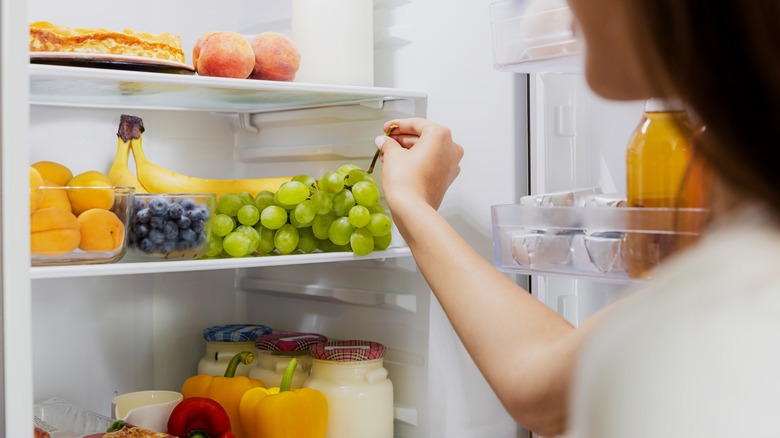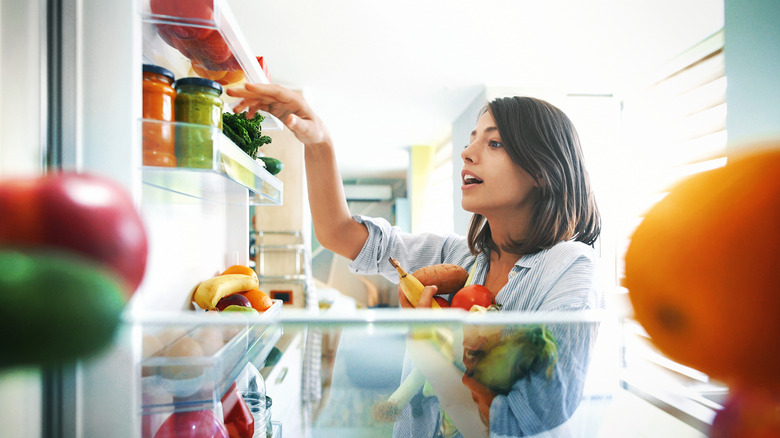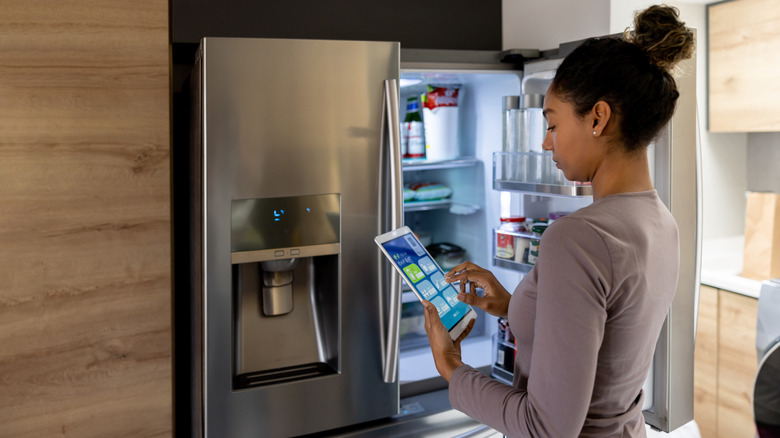What Temperature Should You Set Your Refrigerator?
The refrigerator is arguably the most important kitchen appliance; without it, you would hardly ever need to use the stove, oven, or that fancy air fryer you received for your last birthday. Modern-day refrigeration is also the reason we can keep food around for several days and not worry about getting sick — that is, assuming we keep that food stored at a safe temperature.
When it comes to food storage, there are two main numbers to keep in mind: 40 and 140. These numbers, which are Fahrenheit temperatures, denote something known as the "danger zone," or the range in which food is most susceptible to bacteria. This means that when it comes to deciding your refrigerator temperature, it must never be warmer than 40 degrees Fahrenheit. With that said, make sure it also stays comfortably above 32 degrees, or you could risk your refrigerated food turning into frozen food. And if the power goes out, there are a few rules to keep in mind when deciding if your food is safe to eat.
Your refrigerator should be set below 40 degrees Fahrenheit
When perishable foods are kept at anything resembling room temperature, they start to grow bacteria. According to the USDA, bacteria start to rapidly reproduce when food is left out at temperatures between 40 and 140 degrees Fahrenheit. If left out for more than two hours, enough bacteria can grow to potentially cause food poisoning. If you keep your refrigerator temperature above that 40-degree mark, you risk consuming bacteria-ridden food.
Ideally, food should be stored below that 40-degree number and comfortably above freezing — somewhere between 35-38 degrees Fahrenheit — to ensure it is well out of range of growing bacteria but also doesn't run the risk of freezing. These days, most refrigerator temperatures won't go below freezing, so you can set the temperature to the lowest setting. Periodically check to make sure your food isn't frozen, and adjust the temperature as needed.
What happens if there is a power outage?
Once you set your refrigerator to the ideal temperature, you shouldn't run into any issues. The one exception here is when the power goes out. In this case, you'll need to make sure your food isn't exposed to the danger zone for more than two hours.
An easy way to know whether the food is safe to eat is to keep a thermometer in the fridge to know the real-time temperature. As a general rule of thumb, never open the refrigerator once the power goes out; that cool air will immediately escape. If you don't have a thermometer in the fridge, the CDC says that food is safe to consume as long as the power outage does not exceed four hours and you never open the refrigerator door. If any food develops a strange smell, look, or texture, it's safer to just throw it away.


